The Central Market of Valencia
We explore the Central Market of Valencia in this post. Discovering one of the most beautiful structures dedicated to culinary excellence in produce, specialty foods and unique deli, baked goods, cheeses and other delicious foods to try all in one impressive structure.
I have to honestly say that this food market in Valencia totally blew me away and exceeded all my expectations. I’m sure that this is the largest and probably the best food market in all of Spain, if not in all of Europe and specializing in delicious local produce, deli products, baked items, delicacies and specialty goods only made in this region.
Not only are the displays and food products so beautiful, but the building and interiors of the market is gorgeous and spotless, making this a wonderful experience to shop and explore. The magnificent building showcases hand crafted mosaic details, stained glass panels and beautifully laid out stalls that really entice both locals and visitors to explore the expansive 86,000 square foot building that has been operating since 1928.
The Central Market of Valencia: Experience 100 Years of Culinary Tradition in Spain’s Most Beautiful Market Hall
It is truly an amazing experience, and I share my favorite spots and information in this short and easy guide to help you navigate the market in general.
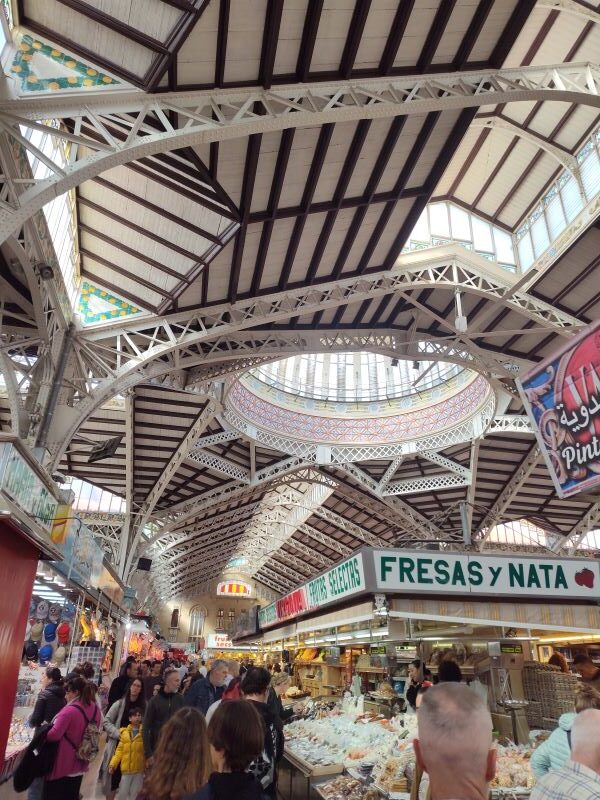
Why visit the Central Market in Valencia
The Central Market (Mercado Central) in Valencia is one of the best places to experience the city’s everyday life, food culture, and architectural charm all in one spot. It’s not just a market—it’s a gathering place where locals shop, catch up over coffee, and pick out ingredients for lunch or dinner. If you’re curious about local flavors, this is where you’ll see them up close: jamón hanging in rows, piles of ripe tomatoes, fresh seafood still on ice, and stalls stacked with oranges, olives, spices, and cheeses.
The building itself is worth a visit even if you’re not buying anything. It’s a standout example of modernist architecture with its iron framework, colorful ceramic tiles, and huge stained-glass windows. It’s beautiful without trying too hard—grand but still very much a part of daily life.
One of the best parts is that it doesn’t feel overly touristy. Sure, visitors come here, but it’s still a market for locals. You can grab a fresh juice, pick up a small tapa, or chat with a vendor about what’s in season. It’s also a good place to see how seriously Valencians take their food—everything is fresh, local, and tied to tradition.
In short, it’s a spot that gives you a real sense of Valencia: grounded, flavorful, and community focused.
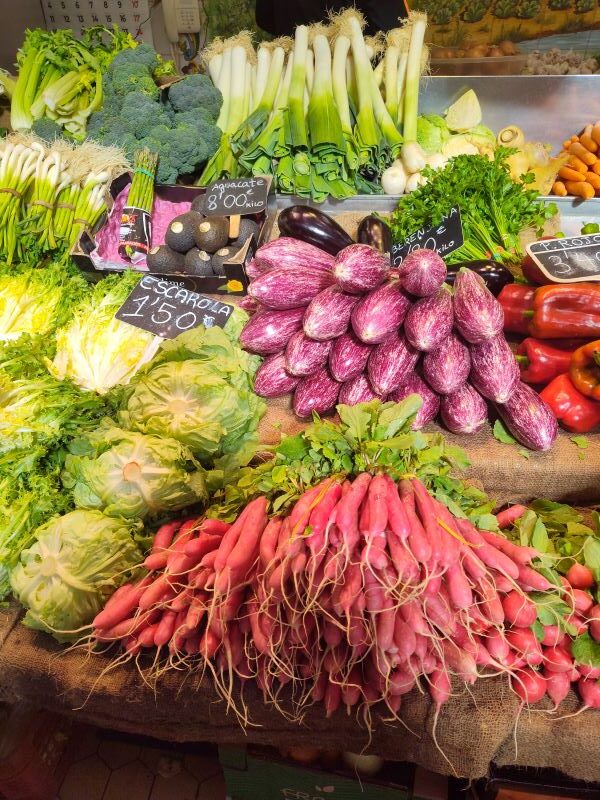
Where is the Central Market located
The Central Market is located in the heart of Valencia’s Old Town, just across from the Llotja de la Seda (Silk Exchange), a UNESCO World Heritage Site. The exact address is Plaza Ciudad de Brujas, s/n, 46001 Valencia, Spain.
It’s easily walkable from many key landmarks in the historic center and close to other attractions like Plaza Redonda and Valencia Cathedral. If you’re coming by public transport, several bus lines and the metro stop nearby, making it a convenient stop during a day of exploring the city.
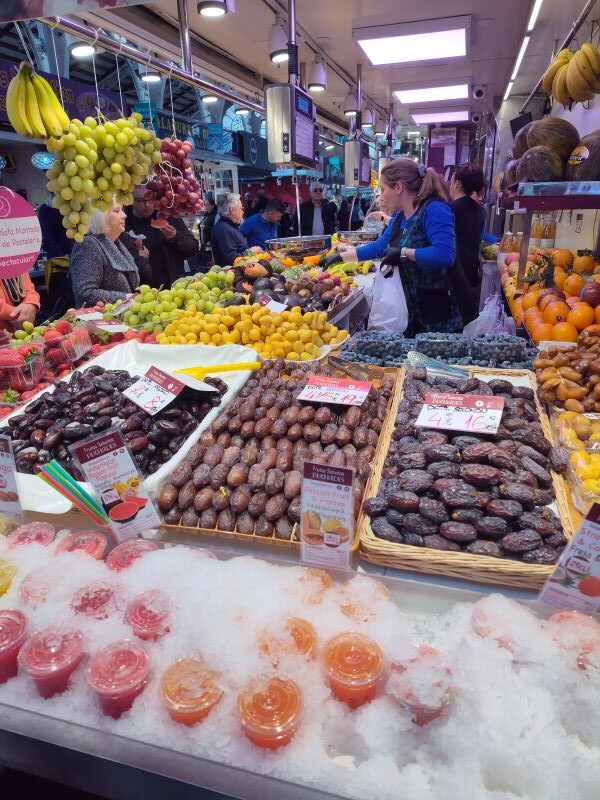
A brief history of Central Market
The Central Market of Valencia, or Mercado Central, is one of the oldest and largest running food markets in Europe. Construction began in 1914 and was completed in 1928, designed by architects Francesc Guàrdia i Vial and Alexandre Soler. Built in the Valencian Art Nouveau style, the market was a symbol of the city’s modernization at the time. It sits on the site of a former open-air market that had existed since the 13th century, when Valencia was a growing commercial hub. The building is notable for its soaring iron and glass structure, colorful ceramics, and a striking central dome. Today, it remains a thriving marketplace, where locals still shop for fresh produce, seafood, meats, and specialty goods,
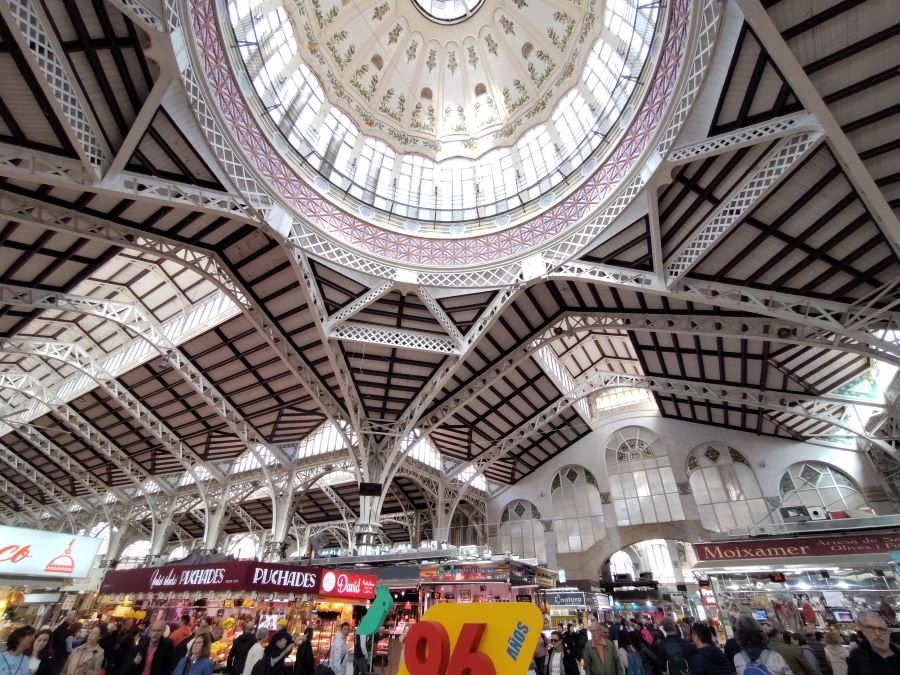
How is the market laid out to visit
The Central Market in Valencia is thoughtfully organized to make your visit both enjoyable and easy to navigate. Covering over 8,000 square meters, the market is laid out like a small city, with straight aisles intersected by two wide main corridors, creating a grid-like pattern. Each aisle is named, much like streets, to help you find your way around .
Stalls are grouped by the type of goods they sell. You’ll find areas dedicated to fresh produce like fruits and vegetables, sections for meats and poultry, and a distinct zone for fish and seafood. There are also stalls offering baked goods, spices, nuts, and local delicacies. Some parts of the market feature ready-to-eat foods and tapas, along with sections for wines, beers, and spirits .
The market’s design includes high ceilings and domes that allow natural light to flood the interior, enhancing the vibrant atmosphere. Decorative elements like ceramic tiles and stained glass add to the visual appeal, making the market not just a place to shop, but also to admire architectural beauty
For a smoother experience, it’s helpful to consult the market map available on-site or online, especially if you’re looking for specific items. Visiting during weekday mornings can also help you avoid the busiest times and enjoy a more relaxed exploration .
Check out the map layout here for more details to visiting.
Overall, the Central Market’s well-planned layout and diverse offerings make it a must-visit destination for anyone interested in experiencing the local culture and cuisine of Valencia.
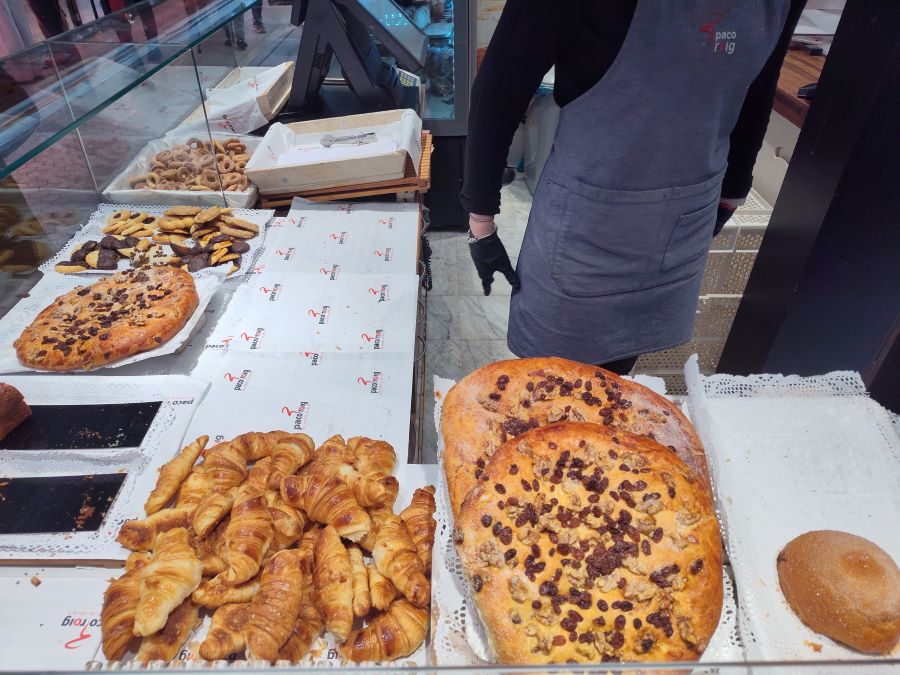
What to buy at the market
If you are looking for what is grown or sourced locally and sold at the market, check out all the specialty foods and produce you can buy here:
I. Fresh Produce
- Valencian oranges – Juicy and sweet, perfect for fresh juice or snacking
- Tomatoes – Especially tomate de colgar, used in local dishes and for spreading on bread
- Chufa (Tiger Nuts) – Used to make the traditional drink horchata
II. Meats and Cured Products
- Jamón Ibérico & Serrano – Dry-cured hams, sliced to order
- Embutidos – Local sausages like fuet, salchichón, and longaniza
III. Seafood and Fish
- Fresh Mediterranean fish – Often caught locally
- Salted cod (bacalao) – A staple in many Spanish dishes
- Canned seafood – High-quality tinned mussels, clams, and anchovies
IV. Cheeses
- Manchego – Aged sheep’s milk cheese from the nearby La Mancha region
- Local artisan cheeses – Small-producer cheeses from Valencia and nearby areas
V. Baked Goods & Sweets
- Fartons – Sweet, elongated pastries typically dipped in horchata
- Pastissets – Small pastries filled with sweet or savory ingredients
- Turrón – Almond nougat, especially popular around the holidays
VI. Spices, Oils, and Pantry Staples
- Saffron – Key ingredient in authentic paella
- Pimentón (smoked paprika) – Adds flavor and depth to many local dishes
- Olive oil – Locally produced, extra virgin options available
VII. Beverages
- Horchata – Freshly made from chufa, served chilled
- Local wines – Especially those from the Utiel-Requena region
- Cava – Spanish sparkling wine, sometimes produced nearby
VIII. Other Local Specialties
- Paella rice (e.g. Bomba or Albufera varieties) – Ideal for making authentic Valencian paella
- Honey and jams – Often made from local orange blossom or wildflowers
- Nuts and dried fruits – Especially almonds and figs
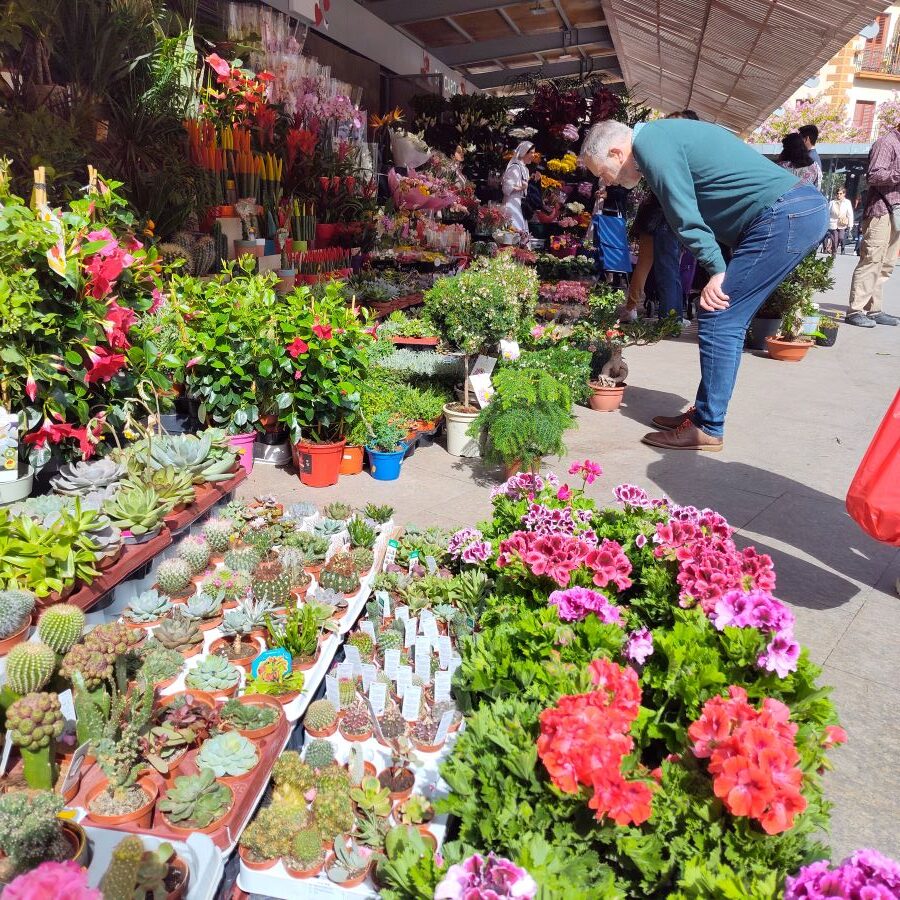
Hours and additional details to visiting
Valencia’s Central Market (Mercado Central) is a vibrant hub of local life, offering a rich tapestry of sights, sounds, and flavors. Here’s what you need to know to make the most of your visit:
Opening Hours
- Monday to Saturday: 7:30 AM – 3:00 PM
- Closed: Sundays and public holidays
Note: While the market officially closes at 3:00 PM, many stalls, especially those selling fresh produce, may begin to wind down earlier. To experience the market at its liveliest and to access the freshest goods, consider arriving between 7:30 AM and 10:00 AM.
Location & Getting There
- Address: Plaça de la Ciutat de Bruges, s/n, 46001 Valencia, Spain
- By Metro: Nearest stations are Àngel Guimerà (Lines 1, 2, 3, 5, 9), Xàtiva, and Colón (Lines 3, 5, 9)
- By Bus: EMT lines 7, 27, and 60 stop nearby
- By Car: An underground car park (Centre Històric-Mercat Central Parking) is available beneath the market. Purchases at the market may qualify you for one hour of free parking.
Tips for Visitors
- Cash is King: While many vendors accept cards, some smaller stalls may prefer cash. Having some on hand can be helpful.
- Photography Etiquette: Always ask before taking photos of stalls or vendors. Some may have signs requesting no photography.
- Respect the Space: Avoid blocking narrow aisles and be mindful of the busy environment, especially during peak hours.
- Accessibility: The market is wheelchair-friendly, with ramps and wide aisles facilitating movement.
- Guided Tours: For a deeper understanding of the market’s history and offerings, consider joining a guided tour. These often provide insights into the architectural features and culinary traditions of the region.
Nearby Attractions
After exploring the market, take time to visit nearby landmarks such as the La Lonja de la Seda, a UNESCO World Heritage Site, and the Church of Santos Juanes. Both are just a short walk away and offer a glimpse into Valencia’s rich history.
For more information or to plan your visit, you can check out the official Central Market website.
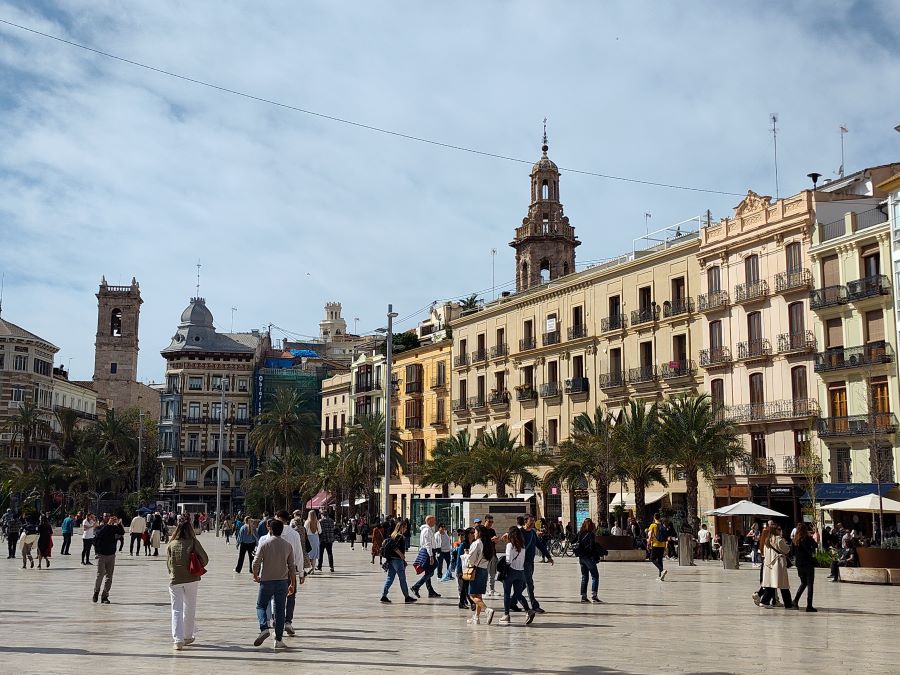
Guided Tours of Central Market
For a better understanding of the market and trying out some local delicacies, why not check out these fantastic foodie tours of the market?
Valencia Food Tour with Tapas & Drinks with a Local
Discover the most interesting parts of Valencia’s city center while tasting local cuisine. Enjoy delicious dishes such as fried anchovies, croquetas, esgarraet, tortilla de patatas, and more.
This tour combines elegance and fun together. The most relevant buildings, shops, and squares of the Valencia Old Town are waiting for you. We’ll also show old pictures and explain the evolution of this vibrant city.
Valencia: Street Food Tour including Paella & Tapas Tasting
Explore Valencia while embarking on a walking tour of the city’s best food locations. Start at Mercado Central, disover the old town and taste a Paella, stopping for tapas along the way.
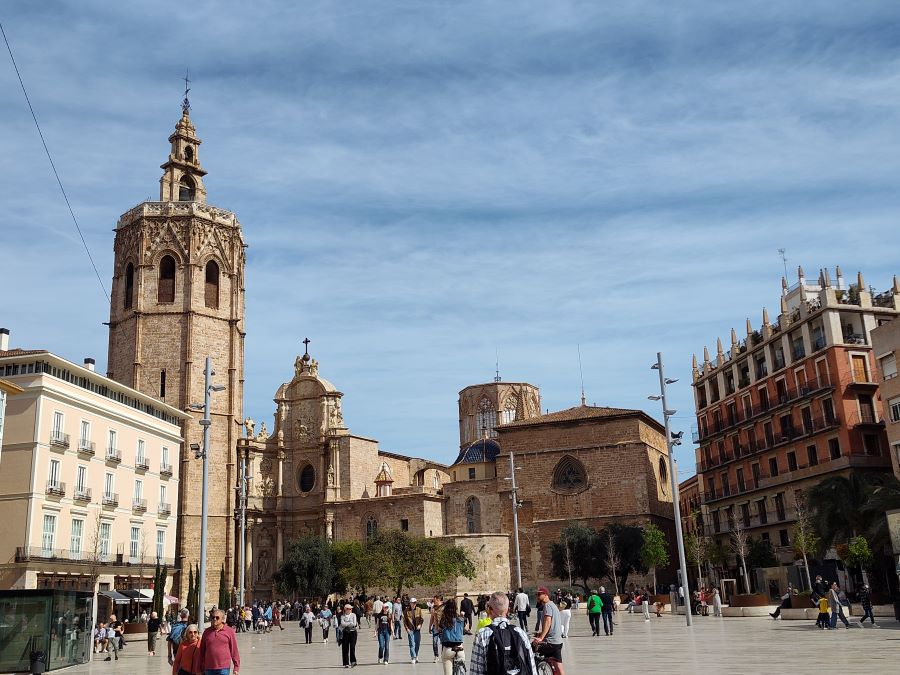
Further reading – check out these Valencia topics
A visit from Barcelona to Valencia
Specialty foods and markets in Valencia
Conclusion
I love visiting the local markets of each city and Valencia’s Central Market is truly impressive and easy to visit in the center of the Old Town. Hope that this guide shares some of the top things to sample and look for when you are visiting the market.
Thanks for checking out the post on Visit Spain and Mediterranean, please do check out all the other topics that may interest you on the website.
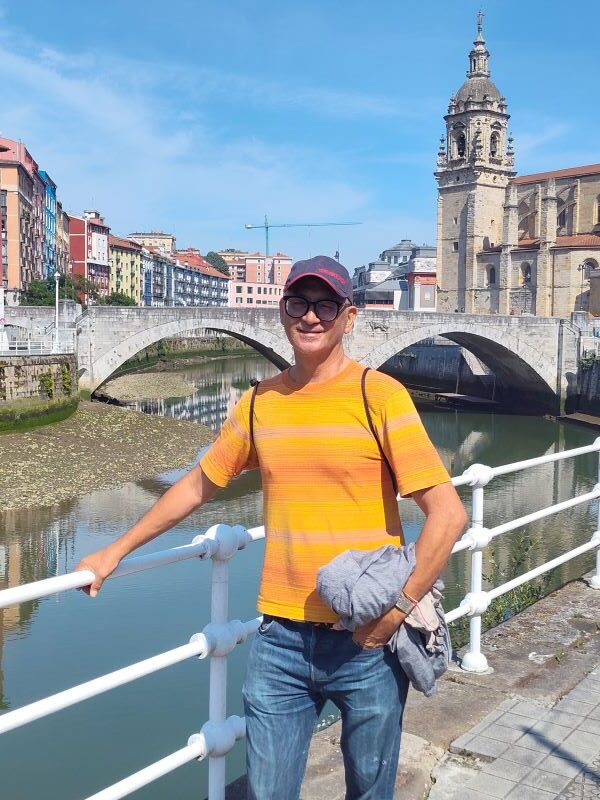
About author – Noel Morata
After relocating from the United States to Andalusia in 2020, I’ve made it my mission to discover every corner of Spain. Based just east of Granada, I’ve spent over 12 months exploring Valencia province and the rest of Spain, including multiple extended visits to Valencia throughout different seasons. My background in Spanish cultural studies and five years of residence in southern Spain have given me unique insights into the region’s historical significance, local customs, and culinary traditions.
I regularly update my guides with the latest information gathered through personal visits and relationships with local tourism officials, always seeking what’s new and exciting in each destination. As a self-proclaimed foodie, I’m passionate about discovering authentic local markets and regional specialties.
As a self proclaimed foodie, I love visiting Valencia’s specialty markets and the central market in the heart of Valencia is one of the most outstanding markets in all of Spain if not all of Europe.
Disclosure – some of the links above to various tours, transportation and hotels are affiliate links that benefits our site if you book here and we appreciate your support. The links are competitive, and you are not paying above what other affiliates provide.
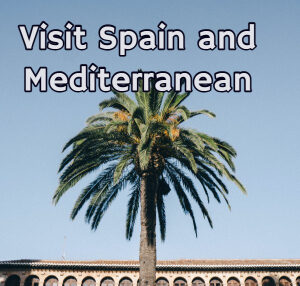
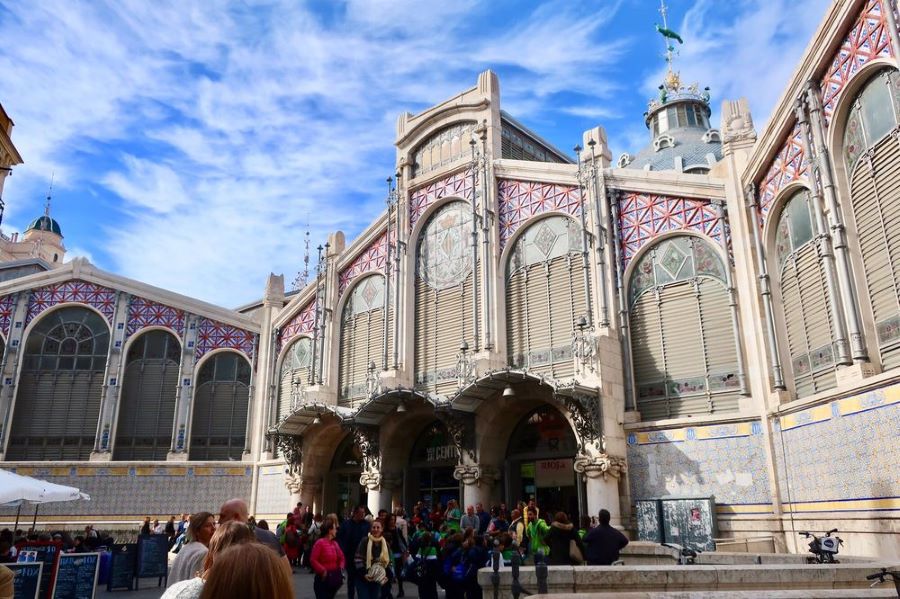
2 thoughts on “the central market of valencia”